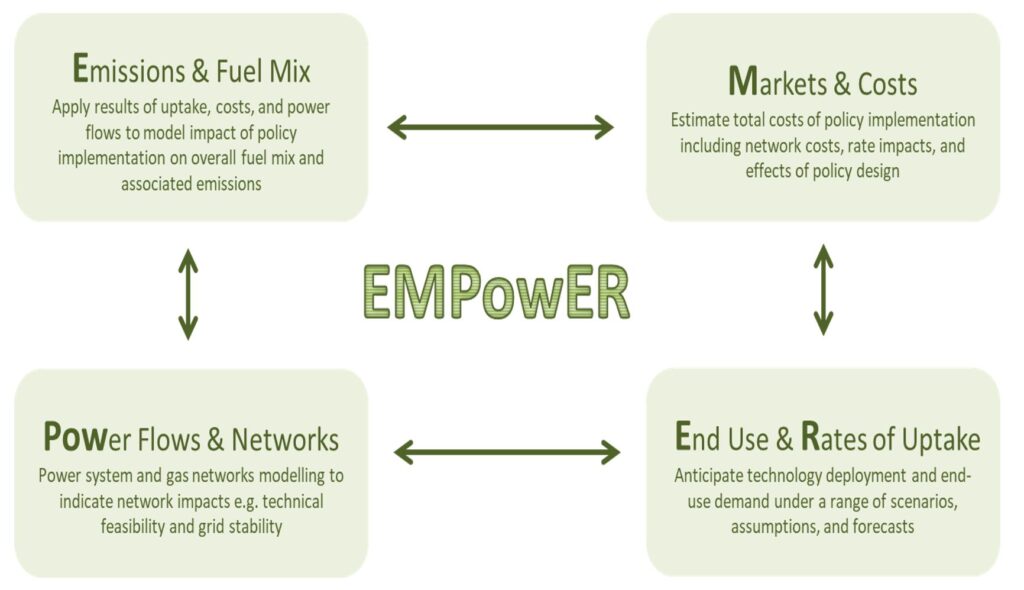EMPowER Project
The UCD Energy Institute’s interdisciplinary modelling approach, informed by deep expertise in power systems, has led to the development of the Emissions and Fuel Mix, Markets and Costs, Power Flows and Networks, and End Use & Rates
of Uptake (EMPowER) modelling framework.
EMPowER offers integrated, comprehensive insights on achievability of a low-carbon future, from both an economic/policy perspective, as well from a technical and commercial point of view – a combination critical to formulating and executing sound energy and environmental policy.
Effective Climate Action entails particularly intensive technical and economic modelling. EMPowER provides electricity systems modelling services to the Climate Action Modelling Group within Department of the Environment, Climate and Communications (DECC) providing a unique contribution to their overall research and analysis capacity. This forms part of the national policy modelling capacity that draws on expertise from several different institutions.

Figure 1. EMPowER Model Modules Schematic
The EMPowER modelling approach goes beyond legacy energy systems modelling with basic engineering parameters to examine with precision the effect of low-carbon technology outcomes on both distribution and transmission networks. In addition, EMPowER explores system costs and price impacts using market modelling that captures realistic outcomes under the Integrated Single Electricity Market (I-SEM). It consists of three interacting modelling approaches:
- Agent-based microsimulations of technology uptake. These models are calibrated to Irish survey and historical data, and include the economic, social and risk-aversion (barrier) effects that influence individual consumer decisions.
- AC powerflow models of new load and distributed energy resource impacts on the distribution network, focusing on voltage stability constraints.
- Unit commitment simulation of the operation of the future power generation systems with high RES-E (using VTT/UCDBackbone),to obtainmarginal costs and emissions
- Mutual dependencies and feedbacks between the above.
The primary outputs of EMPowER are:
- Technical and engineering feasibility of various electricity load and shares of renewable energy in the electricity system
- Role of flexibility (consumer, demand-side-management) at DSO and TSO levels
- Impact of policy on clean technology uptake
- Net emissions reductions achievable within a given policy mix
- Integrated assessment of policy measure alternatives
Work is divided into three strands (1) technology adoption (2) distribution system and (3) transmission system (generation). There are very close links and overlaps between each of these strands.